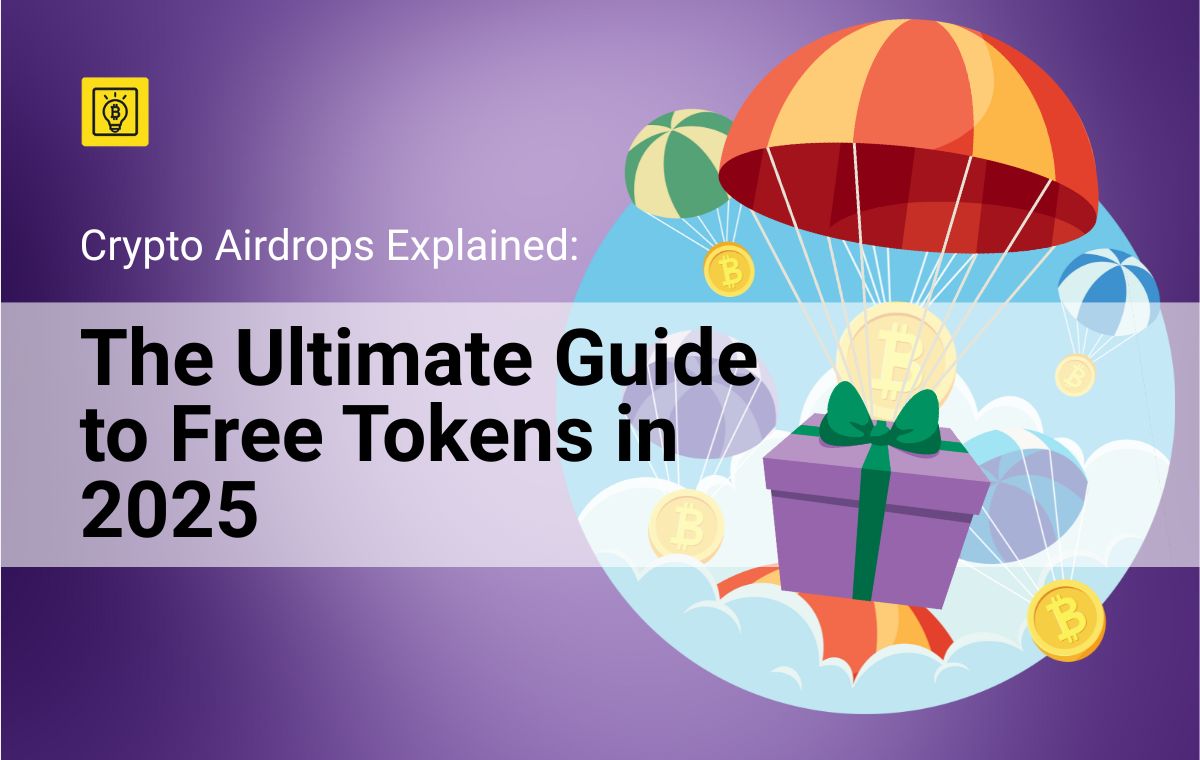Introduction
Imagine receiving free cryptocurrency just for holding a wallet or completing simple tasks. That’s the magic of crypto airdrops — a popular distribution strategy that allows users to earn free tokens from blockchain projects. But while it sounds like free money, airdrops come with their own set of risks, opportunities, and strategies. This guide covers everything you need to know about crypto airdrops in 2025.
What is a Crypto Airdrop?
Definition and Basic Concept
A crypto airdrop is a marketing strategy used by blockchain-based projects to distribute free tokens or coins to the community. These tokens are typically sent to users’ wallets as a reward for promoting or participating in the ecosystem.
History of Airdrops
The airdrop model gained popularity during the ICO boom of 2017. Projects like OmiseGO and Stellar distributed tokens to raise awareness and grow their communities quickly. Since then, airdrops have evolved into a strategic tool for both marketing and user acquisition.
Types of Airdrops
Standard Airdrop
Free tokens are sent to wallet addresses simply for signing up or completing basic steps, like joining a newsletter or following a project on social media.
Holder Airdrop
Distributed to wallets that already hold a specific cryptocurrency. For example, holders of Ethereum might receive tokens from a new ERC-20 project.
Bounty Airdrop
Participants complete tasks such as retweeting, writing blog posts, or creating YouTube reviews. The more you contribute, the more tokens you receive.
Exclusive or Whitelist Airdrop
Reserved for early supporters, community members, or whitelisted users who complete registration and meet specific eligibility requirements.
Why Do Projects Launch Airdrops?
Marketing and Awareness
Airdrops are a cost-effective way for projects to gain visibility, attract new users, and generate buzz in a crowded market.
Network Effect and Decentralization
By distributing tokens widely, airdrops help decentralize ownership, encouraging a more engaged and distributed community.
Rewarding Loyalty
Airdrops can be a reward mechanism for long-term holders or early adopters, reinforcing trust and user retention.
How to Qualify for Airdrops
Common Eligibility Requirements
Most airdrops ask users to:
- Hold a specific coin (like ETH or SOL)
- Follow official social media accounts
- Join a Telegram group or Discord server
- Fill out a registration form
Wallet Setup and KYC
- Use a non-custodial wallet (e.g., MetaMask, Trust Wallet)
- Connect your wallet securely
- Some airdrops may require KYC (Know Your Customer) verification, especially if backed by regulated projects.
Top Platforms to Find Legitimate Airdrops
Airdrop Aggregator Sites
Crypto Forums and Telegram Groups
- Bitcointalk.org (bounty threads)
- Discord and Telegram groups focused on Web3 and DeFi
Twitter and Official Channels
Follow verified accounts and check for announcements from project founders and developers. Always cross-verify through official websites.
How to Stay Safe from Airdrop Scams
Common Red Flags
- Asking for private keys or seed phrases
- Redirecting to fake dApps or phishing sites
- Promising unrealistic token values
How to Protect Your Wallet and Data
- Use a separate wallet for airdrops
- Avoid giving out sensitive information
- Double-check URLs and community links
- Use a hardware wallet when possible
Real-World Examples of Successful Airdrops
Uniswap (UNI)
In 2020, Uniswap airdropped 400 UNI tokens (worth ~$1,200 at the time) to every wallet that had used its platform. This move boosted user loyalty and cemented Uniswap’s place in DeFi history.
Arbitrum (ARB)
In 2023, Arbitrum rewarded users who had interacted with their Layer 2 platform. Some received thousands of dollars worth of ARB, encouraging adoption and DeFi activity on their network.
Stellar (XLM)
Stellar’s 2018 airdrop through Blockchain.com distributed over $125 million worth of XLM to increase awareness and wallet adoption globally.
The Future of Airdrops in Web3
Smart Airdrops
Projects are now using on-chain behavior (like DAO voting or NFT ownership) to create targeted airdrops that reward actual engagement rather than just signups.
Soulbound Airdrops
Tokens that are non-transferable, often used to reward reputation or achievements. These “soulbound” tokens are part of the evolving identity layer in Web3.
Airdrops + Governance Tokens
Future airdrops may grant governance rights, allowing recipients to vote on project decisions — increasing community involvement and decentralization.
Conclusion
Crypto airdrops represent an exciting way to earn free tokens, discover new projects, and participate in the evolving Web3 ecosystem. However, they require caution, strategy, and research. By understanding how airdrops work and staying informed, you can safely take advantage of these opportunities while avoiding the traps that come with them.


